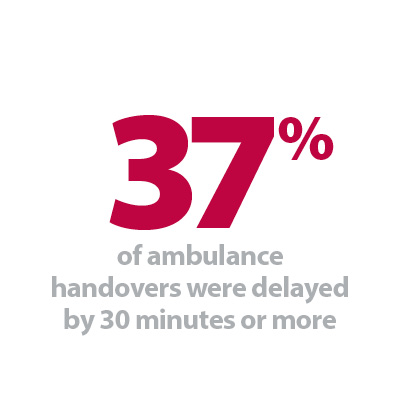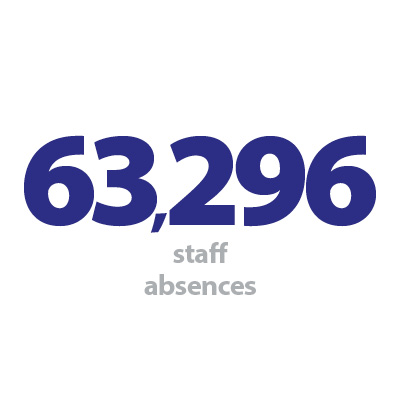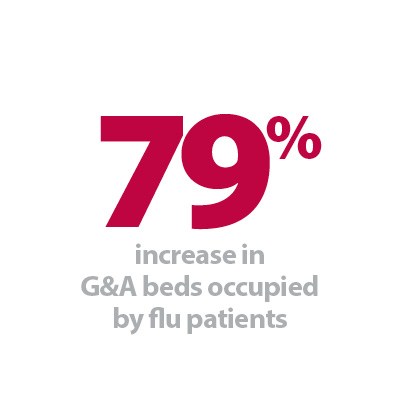


Winter situation report (19 – 25 December)
A&E closures & diverts: There were no A&E closures again this week. There were 17 total A&E diverts this week, five more than the week prior.
Ambulance arrivals: A total of 70,166 patients arrived by ambulance. This is an increase of about 1% since last week and down by about 16% compared to the same week last year.
Ambulance handovers: About 37% of ambulance handovers were delayed by 30 minutes or more, down from 41% last week, but an increase on 13.4% last year. A total of 36,292 hours were lost to ambulance handover delays.
General and acute (G&A) beds: There was an average of 99,940 G&A beds open each day – 5,043 more than the same time last year, an increase of about 5%. On average each day 285 beds were unavailable and void due to non-COVID infections. Average bed occupancy remains high at 93.1%: this is an increase of 7.1 percentage points compared to the same week last year.
Critical care: Adult critical care bed occupancy increased slightly this week to 81.7%, up from 81.6%. This is higher than levels seen in the same week last year (75.0%).
Diarrhoea and vomiting (D&V): The number of beds closed due to D&V and norovirus has decreased again this week, with an average of 337 beds closed per day. This is down from 432 last week but above levels seen this time last year (280).
Discharges: There were an average of 22,494 patients each day who no longer met the criteria to reside, a decrease of about 1% on the previous week. Of these, 56% (or 12,674) stayed in hospital this week, a lower proportion to last week.
Flu: This week the average number of G&A beds occupied by flu patients each day increased by 79% to 3,479. An average of 267 critical care beds were occupied by flu patients each day this week (80% more than the week before). Compared to the same week last year, the average number of G&A beds occupied by flu patients each day has increased by 3,447 beds. The average number of critical care beds occupied by flu patients has increased from the same time last year (265 more). These considerable increases are because last year flu was not prevalent due to COVID-19 restrictions and social distancing.
Long stay: The number of patients staying in hospital longer than seven, 14 and 21 days has decreased since last week (down by 4.5%, 4.9% and 5.1% respectively). Compared to the same time last year, the numbers of patients staying in hospital for longer than seven, 14 and 21 days have all increased (up by 16.9%, 19.2%, and 24.4% respectively).
Neonatal intensive care beds: Occupancy has decreased from last week and is at 68.6%, down from 70.6% last week but slightly higher than 68.4% the same week a year before. The average number of care beds open is 1,711, a similar level to the week before and 2% higher than the same week last year.
Paediatric intensive care beds: Occupancy has increased this week to 88.7%, higher than 87.9% last week. This is more than the same week last year (78.7%). The average number of care beds open has fallen to 366, down by 1.7% on last week but up by 1.5% compared to the same week last year.
Staff absences: There were an average of 63,296 total absences each day this week, of which 13% were COVID-19 related (8,029). The total number of staff absences has once again increased from the week before, and the proportion of COVID-19 related absences has also increased slightly (up from 12%).